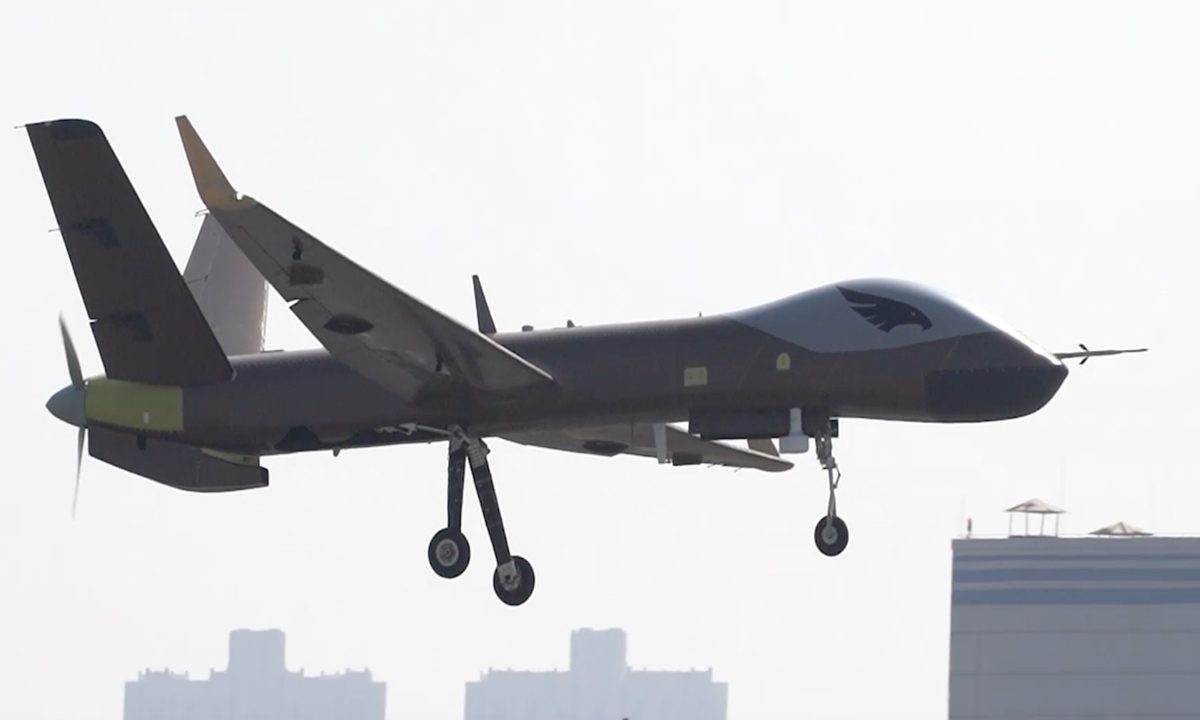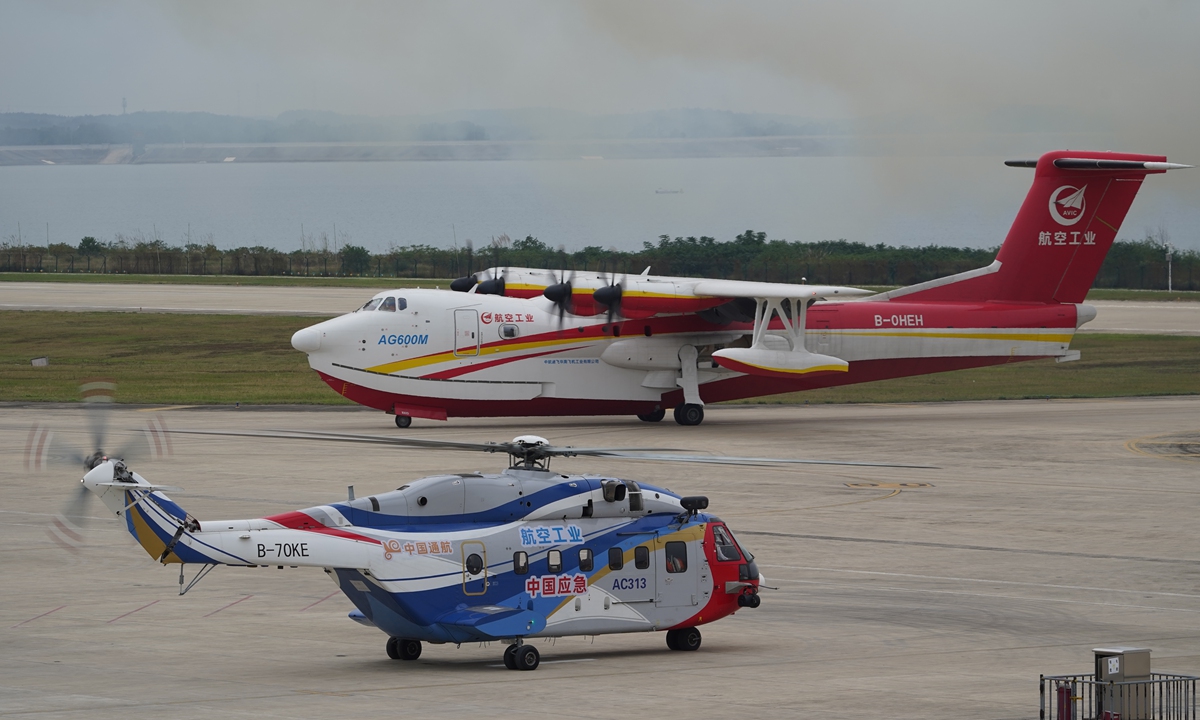China has recently undertaken its largest-ever emergency rescue aviation exercise, demonstrating the critical contributions of domestically produced Chinese aircraft, both manned and unmanned, in bolstering the nation’s emergency response capabilities.
The exercise, organized by the state-owned Aviation Industry Corporation of China (AVIC), was held in Jingmen, Central China’s Hubei Province, on October 27.
It encompassed a wide array of training modules, ranging from disaster reconnaissance and situation monitoring to relay communication, precision firefighting, and medical rescue.
An eye-catching aspect of the exercise revolved around the proficient utilization of several unmanned aircraft in emergency scenarios, ensuring the swift provision of assistance and support.
The Chinese state media outlet, Global Times, elucidated the pivotal role played by a Wing Loong-1E drone during the exercise.
According to the report, this sophisticated Wing Loong-1E drone, armed with state-of-the-art high-definition optoelectronic reconnaissance equipment, a multi-function radar, and emergency communication support pods, was deployed to the mission area.
It took flight from Zhanghe Airport in swift response to the emergence of thick smoke originating from a simulated fire scenario. The drone assumed a multifaceted role in this critical operation.

Initially, it provided real-time transmission of high-quality images from the affected area, furnishing invaluable support to the on-site command post.
Moreover, it functioned as an aerial base station, working to restore and maintain mobile public network signals that had been disrupted by the fire, ensuring seamless communication and coordination during the emergency response efforts.
Following this, two AG600M firefighter aircraft, an MA60 firefighter aircraft, and an AC313 firefighter helicopter executed a sequence of eight water-dropping firefighting missions.
They effectively dispensed a cumulative total of 70 tons of water using various methods, successfully extinguishing the fire. This integration of advanced technology underscored the drone’s significance in enhancing the overall effectiveness of the exercise.
The Wing Loong-1E drone boasts an impressive maximum endurance of 45 hours, allowing for extended operational periods and a maximum range of 7,000 kilometers, ensuring its capability to cover substantial distances.
Even when positioned at a high-altitude airport situated 4,000 meters above sea level, the Wing Loong 1E is capable of taking off and landing under the most demanding external payload conditions.
In addition to the involvement of the Wing Loong-1E drone, the exercise featured the participation of the AR500 unmanned helicopter. However, Global Times did not provide specific information regarding the role played by the AR500 in the exercise.
Nonetheless, the drill served as a demonstration of the systematic progress made in the realm of independent aviation emergency rescue equipment over the recent years. It also validated the outcomes of research in tactics, scientific innovation, equipment development, and practical application.
AG600M Firefighter Aircraft
The drill featured the participation of seven models of aeronautical equipment, all of which were domestically developed in China and tailored for emergency rescue missions.
These included the AG600M large amphibious aircraft, the MA60 fixed-wing aircraft, the AC313, AC312, and AC311A helicopters, the Wing Loong-1E drone, and the AR500 unmanned helicopter.
Of these, the two AG600M firefighter aircraft garnered significant attention in the Chinese media.
Serving as the backbone of the exercise, the AG600M has a maximum takeoff weight of 60 tons and a unique capability to swiftly draw 12 tons of water in just 20 seconds during high-speed taxiing on water. This substantial water payload can be released onto a fire in a mere four seconds.
Zhao Yuhe, Deputy General Manager of AVIC General Huanan Aircraft Industry Co Ltd, mentioned that the AG600M had completed a total of 61 flights, amounting to 88 hours, executing various combinations of water-dropping techniques, volumes, angles, altitudes, and speeds, with 139 water drops in total. The maximum coverage area of a single drop exceeds 4,000 square meters.

Chinese experts have asserted that the AG600’s performance surpasses international mainstream firefighter aircraft, including Russia’s Be200 amphibious multirole turbofan aircraft and the US-made C130 four-engine turboprop military transport.
Furthermore, the AG600M can be customized for medium- and long-range maritime aviation rescue missions and can serve various special purposes such as island-and-reef transportation, maritime law enforcement, rights protection, and marine environment monitoring.
The exercise’s distinguishing feature lay in the seamless coordination between fixed-wing aircraft and helicopters, as well as manned and unmanned aircraft, effectively uniting aerial firefighting with ground firefighting forces.
Observers noted that the systematic development of aviation emergency rescue equipment stands out as a unique highlight and advantage of China’s emergency rescue system.
- Contact the author at ashishmichel(at)gmail.com
- Follow EurAsian Times on Google News




